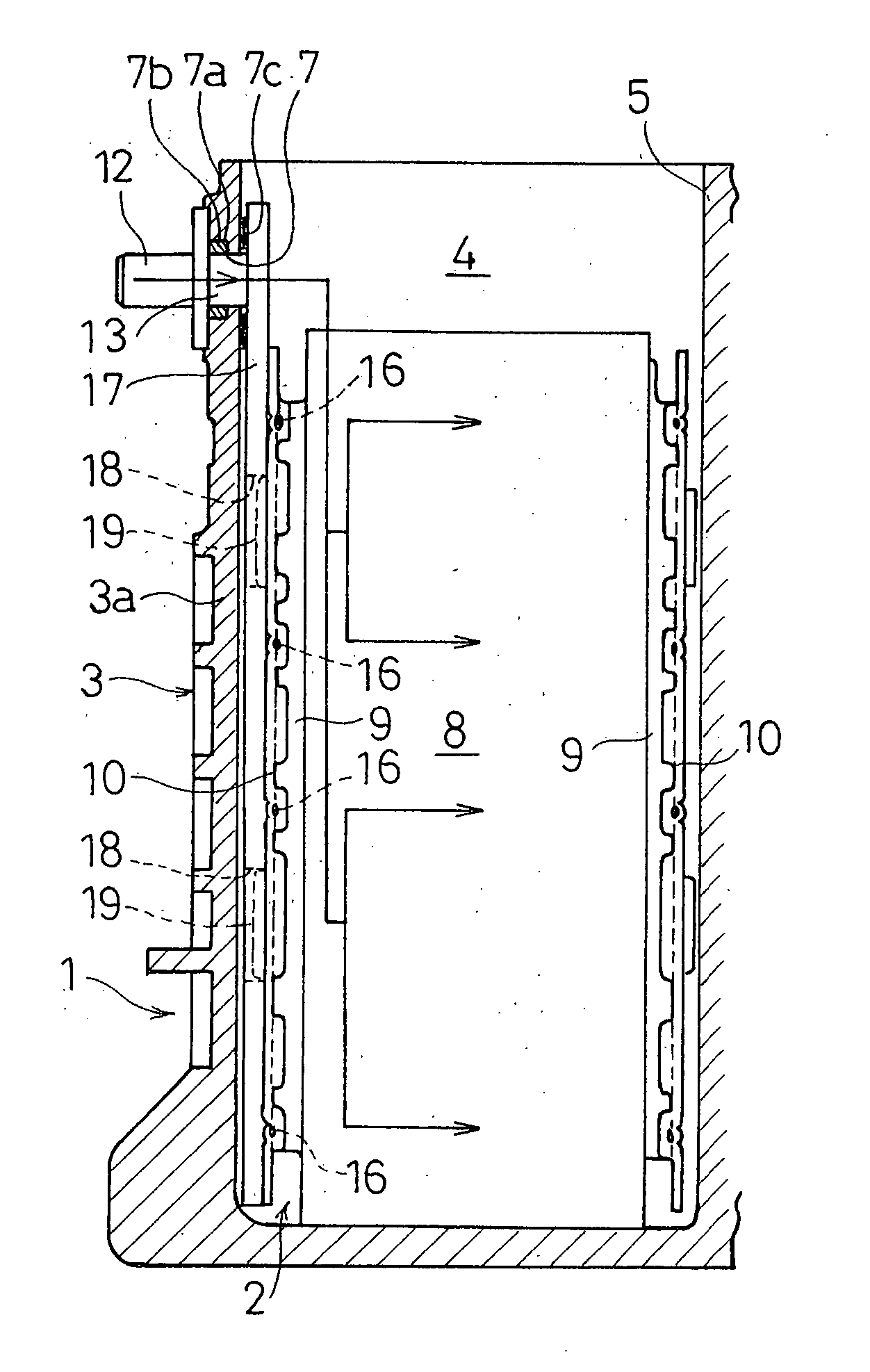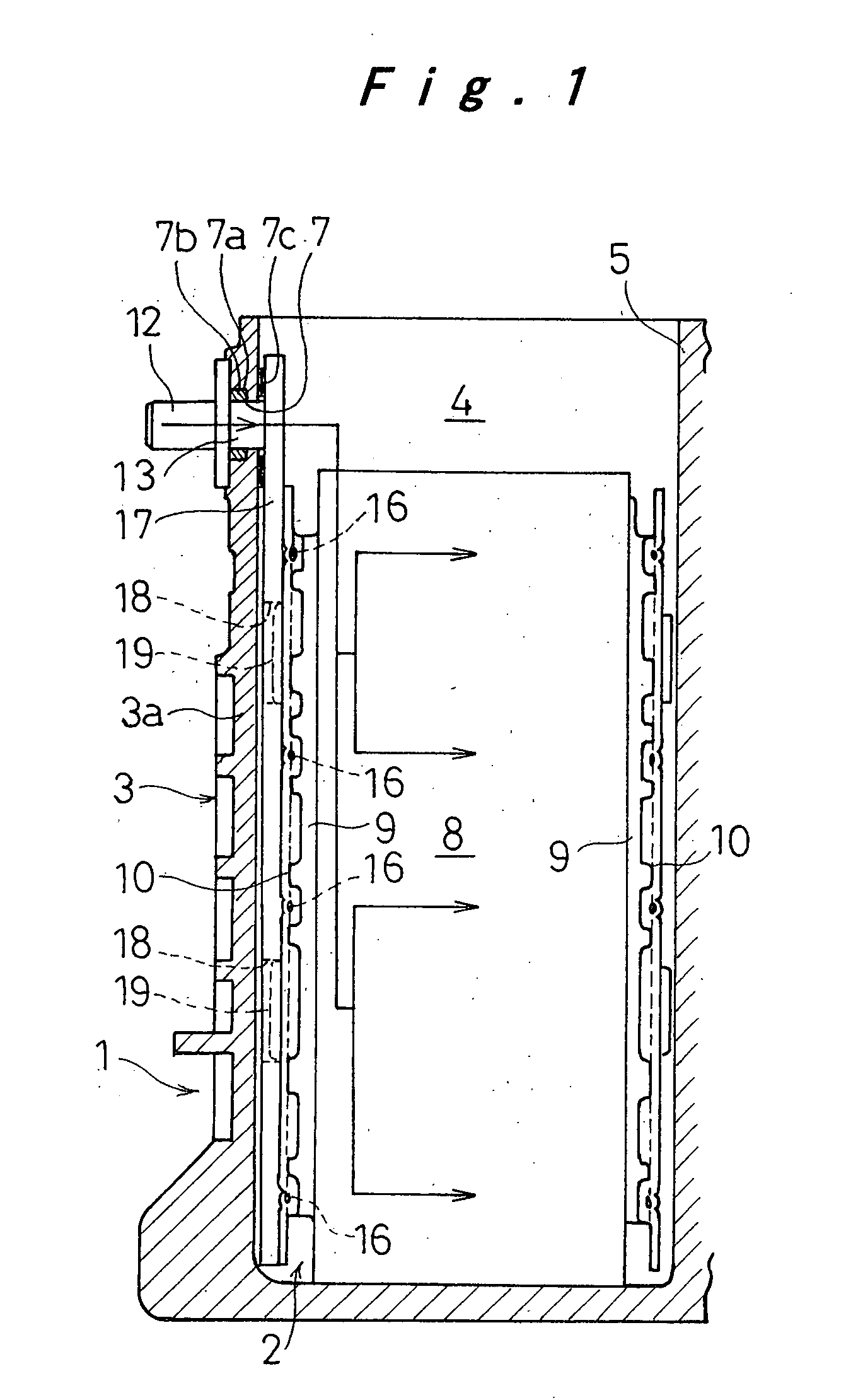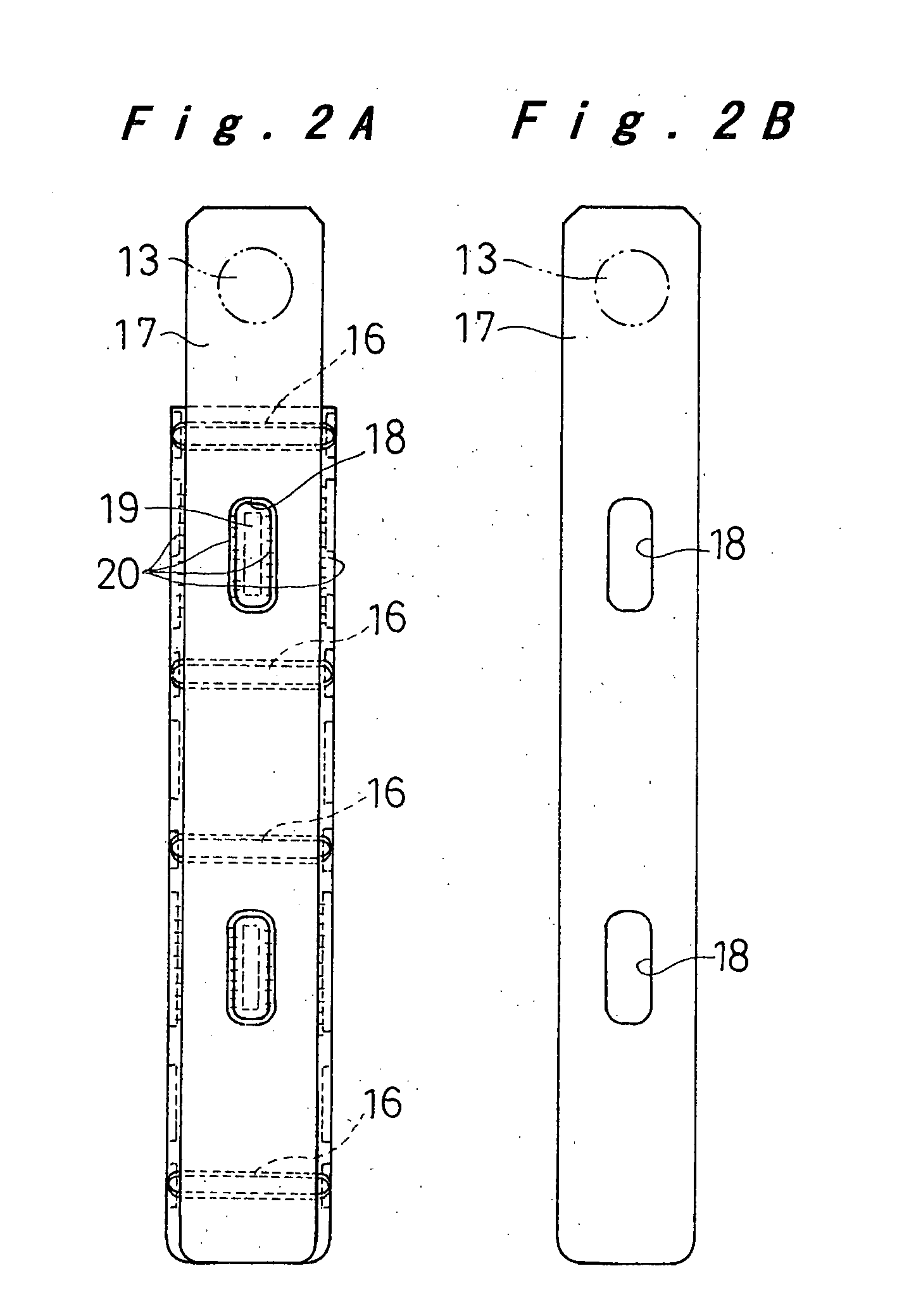Sealed prismatic battery
a prismatic battery and seal technology, applied in the direction of cell components, flat cell grouping, sustainable manufacturing/processing, etc., can solve the problems of large component resistance, major barrier to the realization of higher power output or battery life improvement, and high cost, and achieve lower internal resistance per cell, the effect of increasing power
- Summary
- Abstract
- Description
- Claims
- Application Information
AI Technical Summary
Benefits of technology
Problems solved by technology
Method used
Image
Examples
Embodiment Construction
[0024] One embodiment of a sealed prismatic battery according to the present invention will be hereinafter described with reference to FIG. 1 to FIG. 2B.
[0025] The battery 1 has a prismatic battery case 3 made of a plurality of prismatic cell cases 4, which have short lateral walls and long lateral walls and are connected together in such a manner that their short lateral walls are used as partition walls 5. The battery case 3 is made of synthetic resin such as a PP / PPE alloy which is repellent against liquid electrolyte. In an upper part of the end walls 3a of the battery case 3 are formed connection holes 7, in which connection bosses 13 of connection terminals 12 will be fitted. The connection holes 7 are provided with grooves 7a at their inner periphery for accommodating a sealing material 7b such as an O-ring.
[0026] Each cell case 4 constitutes a cell 2, accommodating liquid electrolyte and an electrode plate group 8, to both sides of which collectors 10 have been bonded. The...
PUM
| Property | Measurement | Unit |
|---|---|---|
| resistance | aaaaa | aaaaa |
| conductive | aaaaa | aaaaa |
| length | aaaaa | aaaaa |
Abstract
Description
Claims
Application Information
 Login to View More
Login to View More - R&D
- Intellectual Property
- Life Sciences
- Materials
- Tech Scout
- Unparalleled Data Quality
- Higher Quality Content
- 60% Fewer Hallucinations
Browse by: Latest US Patents, China's latest patents, Technical Efficacy Thesaurus, Application Domain, Technology Topic, Popular Technical Reports.
© 2025 PatSnap. All rights reserved.Legal|Privacy policy|Modern Slavery Act Transparency Statement|Sitemap|About US| Contact US: help@patsnap.com



